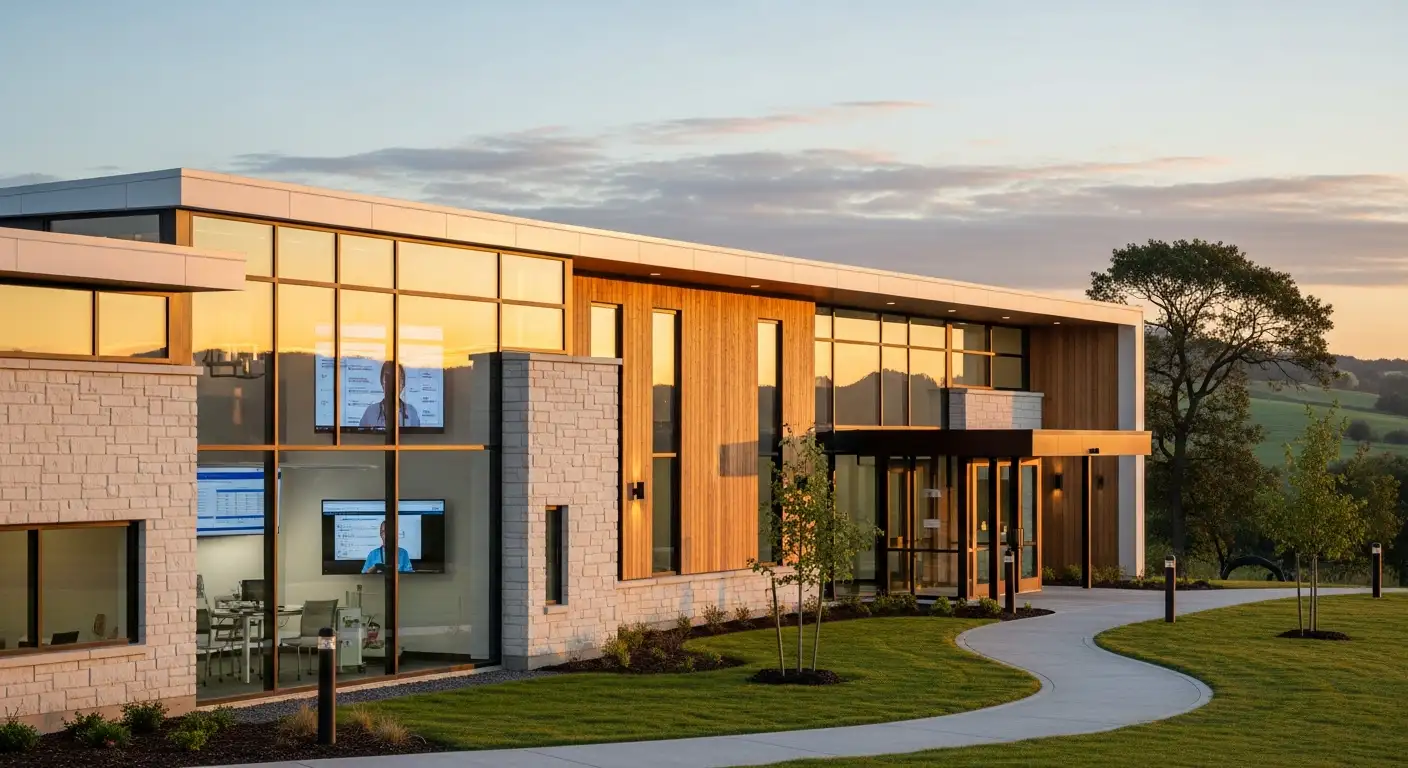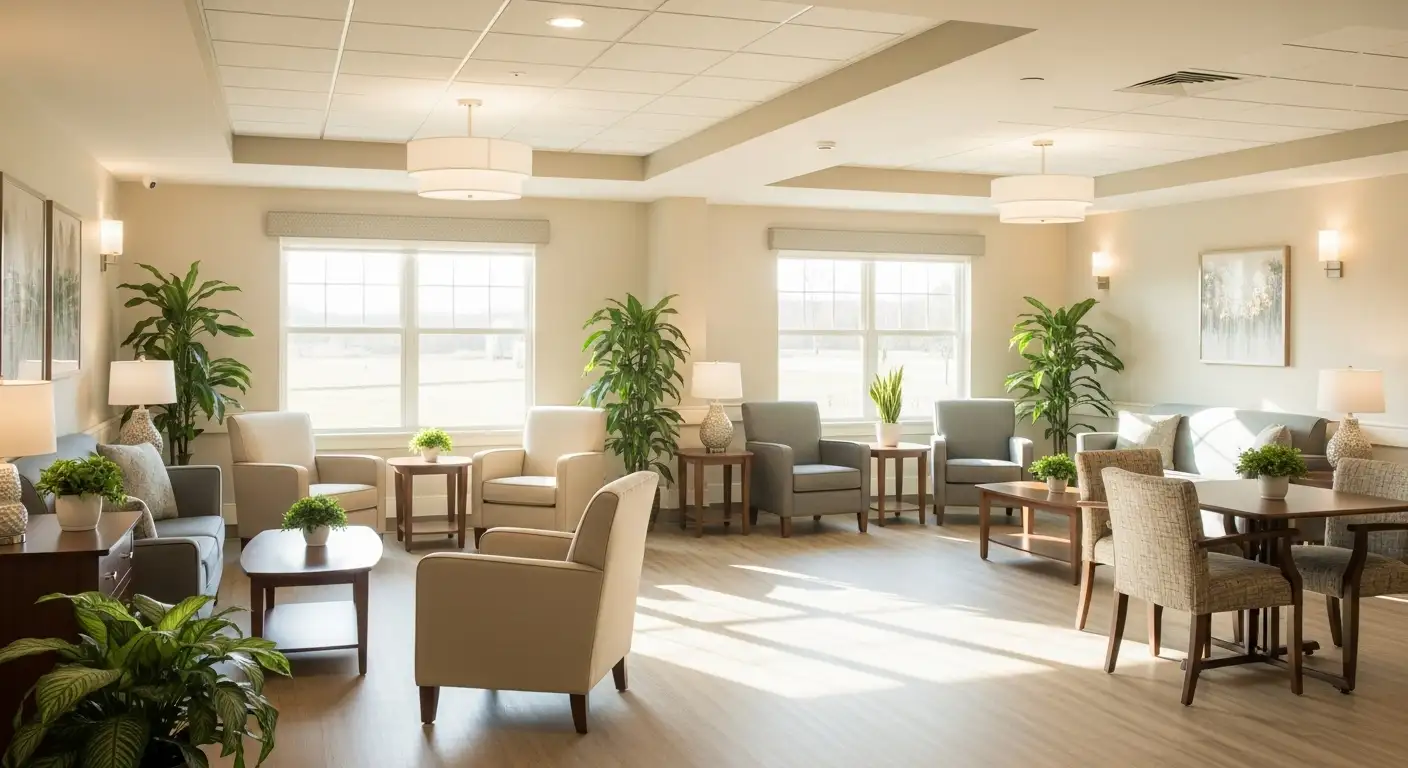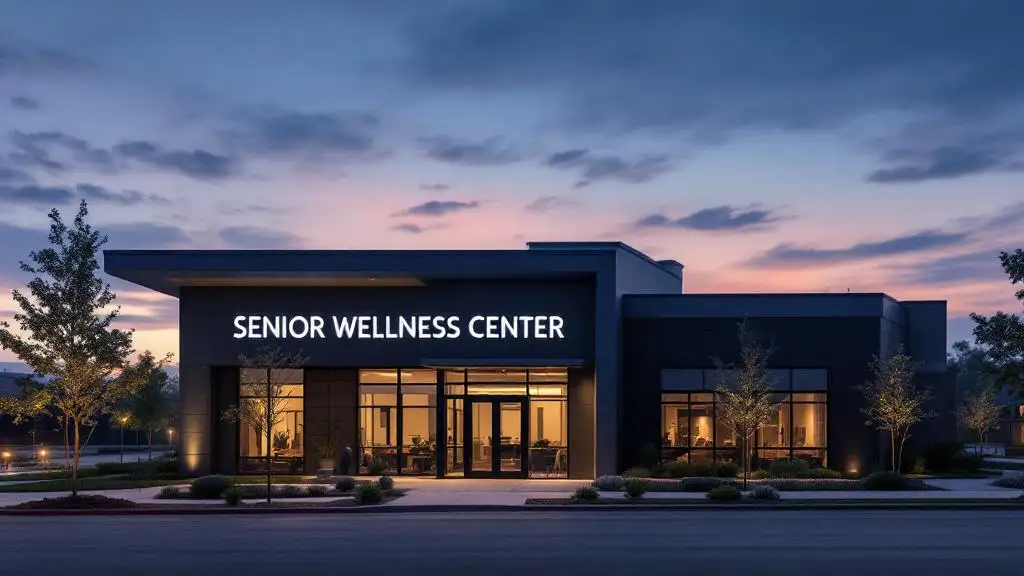Addressing Behavioral Health Disparities Among Rural Seniors
Rural senior communities face myriad challenges when accessing comprehensive behavioral health services, including substance abuse treatment and mental health care. Geographic isolation, provider shortages, stigma, and limited resources exacerbate these barriers, leading to unmet treatment needs. Telehealth emerges as a promising solution to bridge these gaps by delivering multidisciplinary care directly to seniors' homes or local facilities, expanding behavioral health access and improving outcomes.
Multifaceted Behavioral Health Treatment Services for Rural Seniors

What types of comprehensive treatment services are available for substance abuse, mental health issues, and various forms of addiction?
For rural seniors facing behavioral health challenges, a variety of comprehensive treatment services are available that address substance abuse, mental health issues, and multiple types of addiction through a multidisciplinary approach.
Treatment options include inpatient services, where individuals receive medically supervised care; outpatient programs that allow seniors to live at home while attending therapy; and partial hospitalization programs, offering intensive day treatment without overnight stays. These services cover detoxification, counseling, therapy, and medication management.
Evidence-based therapies form the backbone of these services, featuring individual, group, and family counseling tailored to each person's needs. Medication-assisted treatment (MAT), such as buprenorphine and methadone, is widely incorporated to aid opioid use disorder recovery.
Range of service options including inpatient, outpatient, partial hospitalization
- Inpatient care provides 24/7 medical supervision and psychological support during acute phases.
- Outpatient treatment offers flexibility, enabling seniors to remain in their communities while receiving counseling and therapy.
- Partial hospitalization bridges inpatient and outpatient care with highly structured daily sessions.
These modalities often integrate recovery support services, addressing other social determinants such as housing and employment stability.
Inclusion of medication-assisted treatment and evidence-based therapies
MAT programs specifically help manage opioid dependence and reduce relapse risk. Complemented by psychotherapy—like cognitive behavioral therapy (CBT) and trauma-informed care—this ensures holistic treatment. Such combined approaches have proven effective in maintaining long-term recovery.
Preventive and early intervention efforts
Early intervention and prevention are critical components supported by national initiatives. Programs like Substance Use & Misuse Prevention Month emphasize stopping substance use before it starts. Routinely screening older adults for mental health and substance use disorders in hospitals and clinics promotes timely referrals and better outcomes.
Role of national resources and support services
National organizations offer valuable assistance for rural seniors. SAMHSA, for example, provides crisis lines such as the National Helpline (1-800-662-HELP) and 988 Suicide & Crisis Lifeline to support immediate needs.
Additionally, initiatives such as the RecoverMe Campaign connect young adults—and by extension older adults' caregivers and family—with recovery resources and peer support.
Telehealth has emerged as a powerful tool to overcome transportation and provider shortages in rural settings, delivering counseling, medication management, and case consultations remotely.
These national resources help bridge gaps in access and maintain ongoing care, vital for seniors managing behavioral health issues in rural areas.
| Service Type | Description | Benefits for Rural Seniors |
|---|---|---|
| Inpatient Programs | 24/7 medical and behavioral care | Comprehensive supervision during acute crises |
| Outpatient Programs | Flexible therapy sessions without hospitalization | Allows community living with professional support |
| Partial Hospitalization | Intensive day programs with structured therapy | Balances medical oversight with independence |
| Medication-Assisted Treatment | Use of FDA-approved medications alongside counseling | Reduces relapse, manages withdrawal symptoms |
| Preventive Screening | Early identification of mental health/substance issues | Enables timely intervention and improved recovery outcomes |
| Telehealth Services | Remote delivery of behavioral health treatment | Mitigates rural access barriers and transportation issues |
Together, these services form a robust network of behavioral health care tailored to the unique challenges faced by rural seniors, promoting recovery, stability, and improved quality of life.
Barriers to Behavioral Health Access in Rural Senior Communities

What Are the Access Challenges in Rural Areas?
Rural seniors face significant barriers to behavioral health care access, including widespread provider shortages and geographic isolation. Many rural communities lack specialty behavioral health providers. This shortage adds to travel burdens, as patients often must travel long distances for care, which is challenging for older adults with mobility or transportation limitations.
How Do Stigma and Privacy Concerns Affect Treatment Seeking?
Stigma around mental health and substance use disorders strongly impacts rural seniors' willingness to seek help. Small community settings increase privacy concerns since individuals worry about disclosure to neighbors or acquaintances. This social environment discourages treatment seeking despite need.
What Is the Role of Socioeconomic Factors and Insurance?
Socioeconomic challenges such as lower income and education levels in rural areas affect access to services. Insurance coverage gaps, despite some Medicare benefits for behavioral health services, can still leave seniors with limited affordable care options. Financial strain further complicates pursuing treatment.
How Prevalent Are Untreated Disorders?
Behavioral health disorders remain highly prevalent yet undertreated among rural seniors. Nationally, about 29% of adults report any mental or substance use disorder, but only 16.9% receive treatment. In states like Florida with large rural populations, over 60% of adults with mental health disorders remain untreated.
How Does Facility Availability Vary Between Rural and Urban Areas?
The density of behavioral health facilities is significantly lower in rural compared to urban areas. Urban neighborhoods tend to host more treatment centers, correlating with higher insurance coverage and educational attainment. This disparity leaves rural seniors with fewer accessible options, contributing to geographic and social treatment gaps.
| Barrier | Description | Impact on Rural Seniors |
|---|---|---|
| Provider Shortages | Lack of behavioral health specialists and limited primary care training | Limited treatment availability; longer wait times |
| Geographic Isolation | Long travel distances to healthcare facilities | Increases missed appointments and treatment dropouts |
| Stigma & Privacy Concerns | Community unfamiliarity and fear of judgment | Decreases willingness to seek and continue treatment |
| Socioeconomic Factors | Economic challenges and insurance limitations | Reduces affordability and access to sustained care |
| Facility Availability | Fewer behavioral health centers in rural areas | Creates structural gaps in services and support |
Telehealth: A Vital Tool for Expanding Behavioral Health Care in Rural Areas

How Does Telehealth Help Overcome Rural Behavioral Health Care Barriers?
Accessing behavioral health services in rural areas is challenging due to provider shortages, stigma, geographic isolation, and transportation difficulties. Telehealth, through videoconferencing, email, text messaging, and mobile health applications, addresses these barriers by delivering behavioral health care directly to patients regardless of location.
What Types of Telehealth Services Are Available for Behavioral Health?
Telehealth services encompass multiple modalities:
- Videoconferencing: Enables live therapy sessions, psychiatric evaluations, and medication management.
- Audio-only Calls: Provide counseling and crisis intervention for patients without video access.
- Mobile Health Applications: Support long-term management of conditions with tools for medication adherence, self-monitoring, and on-demand counseling.
These services support inpatient hospital consultations, integrated primary care behavioral health, direct-to-consumer platforms, and mobile outreach.
What Behavioral Health Treatments Can Be Delivered Remotely?
Telehealth facilitates a wide array of services including:
- Counseling and psychotherapy
- Psychiatric medication management (including for opioid use disorder and PTSD)
- Case consultations among providers
- Crisis intervention and suicide prevention
- Ongoing case management and patient monitoring
How Has Medicare Expanded Coverage for Telehealth Behavioral Health Services?
Recent regulatory changes have broadened Medicare coverage to include mental health telehealth visits originating from Rural Health Clinics and Federally Qualified Health Centers. Audio-only telehealth options are available to ensure accessibility for seniors without video capabilities. This coverage expansion supports greater utilization of telehealth among elderly rural populations.
What Are the Outcomes and Acceptance of Telehealth in Behavioral Health?
Telehealth behavioral health treatments demonstrate outcomes on par with in-person care. The convenience and accessibility have increased patient engagement and medication adherence, especially in underserved rural communities. The COVID-19 pandemic accelerated regulatory easing and adoption, confirming telehealth as an effective and accepted approach for behavioral health care delivery.
| Aspect | Description | Example/Benefit |
|---|---|---|
| Access Challenges | Provider shortage, stigma, transportation | Telehealth removes geographic and mobility barriers |
| Service Modalities | Videoconferencing, audio calls, mobile apps | Diverse tools to fit patient technology access |
| Treatment Types | Counseling, medication management, crisis intervention | Broad care spectrum available remotely |
| Medicare Coverage | Expansions for Rural Health Clinics and FQHCs, audio-only options | Improved senior access in rural settings |
| Patient Outcomes and Acceptance | Comparable effectiveness, increased engagement | Validated by studies and regulatory support |
Innovative Telehealth Programs Tailored to Rural Senior Behavioral Health Needs

Examples of specific telehealth initiatives serving rural seniors
Rural seniors face distinct behavioral health challenges amplified by geographic and provider shortages. Specialized telehealth programs address these hurdles effectively. For example, the University of Vermont's Telepsychiatry Service provides psychiatric care through videoconferencing specifically targeting older adults in rural nursing homes. This initiative allows seniors to access mental health services without the need to travel, significantly improving convenience and continuity of care.
Psychiatric videoconferencing for nursing home residents
Psychiatric videoconferencing enables comprehensive evaluation and ongoing treatment for nursing home residents with behavioral health needs. These sessions cover diagnosis, medication management, psychotherapy, and crisis interventions. This model alleviates mobility and transportation barriers common among seniors while maintaining high-quality psychiatric support.
Integration of behavioral health into rural primary care via technology
Programs like Summit Healthcare employ tablets and video carts to deliver behavioral health services embedded within rural primary care settings. This integration allows seniors to receive both physical and mental health care seamlessly during routine visits, improving care coordination, reducing stigma, and promoting timely interventions.
Use of mobile health clinics offering screening and medication management
Mobile health clinics expand access further by directly reaching rural populations with services like mental health screening, medication management, and referral to specialty care. These clinics bring critical behavioral health resources to seniors who might otherwise face isolation or service unavailability.
Support for complex needs including PTSD and opioid use disorder
Telehealth platforms enable specialized treatment for complex behavioral health conditions prevalent among rural seniors, such as PTSD and opioid use disorder. Services include counseling, medication-assisted treatment, and case management, tailored to overcome rural-specific barriers and support recovery.
Provider education and workforce training via telehealth platforms
Ongoing workforce training through telehealth helps rural providers enhance their competencies in managing behavioral health issues in seniors. Webinars, toolkits, and virtual consultations foster knowledge exchange and improve service delivery quality across rural communities.
These innovative telehealth programs collectively address multifaceted barriers, delivering accessible, culturally competent, and effective behavioral health care tailored to the needs of rural seniors.
Policy and Funding Support for Telehealth Behavioral Health Expansion

What federal initiatives support behavioral health and addiction treatment?
The federal government allocates substantial funding to combat behavioral health challenges. The Substance Abuse and Mental Health Services Administration (SAMHSA) recently awarded $98 million for the Hepatitis C Elimination Initiative Pilot targeting communities affected by homelessness and mental illness. Additionally, SAMHSA committed over $45 million to sober housing services for young adults, and the Department of Health and Human Services (HHS) through SAMHSA allocated more than $1.5 billion in FY25 for State and Tribal Opioid Response grants dedicated to opioid treatment and recovery programs.
How does SAMHSA contribute to behavioral health and recovery services?
SAMHSA plays a pivotal role by funding initiatives and campaigns such as the RecoverMe Campaign, which connects young adults to resources for substance use and mental health challenges. They also offer immediate crisis support through the National Helpline and the 988 Suicide & Crisis Lifeline, improving accessibility and immediate intervention.
What Medicare provisions enable telehealth for behavioral health?
Medicare covers a wide range of behavioral health services, including inpatient, outpatient, and partial hospitalization services. Importantly, Medicare Part B supports outpatient mental health and substance use disorder programs, including telehealth services. The expansion of telehealth coverage allows delivery of therapy, counseling, and medication-assisted treatment without requiring in-person visits, critical for rural and underserved populations.
What regulatory changes facilitated telehealth expansion during the COVID-19 pandemic?
The COVID-19 pandemic prompted regulatory relaxations that expanded telehealth opportunities. Medicare began covering mental health telehealth visits originating from Rural Health Clinics and Federally Qualified Health Centers, with audio-only options included. These changes removed previous geographic barriers and eased restrictions on provider eligibility and service billing.
What advocacy efforts are underway to reform telehealth policies?
Organizations like the American Hospital Association (AHA) advocate for policies to permanently lift geographic restrictions, broaden practitioner eligibility, and allow hospital outpatient billing for virtual services. Such reforms are essential to maintain and expand telehealth access, particularly for rural communities.
Why are sustainable financial support and licensure flexibility important?
To grow telehealth services effectively, stable funding mechanisms and flexible licensure across state lines are critical. They ensure continuity of care, support workforce expansion, and enhance provider participation. These elements help mitigate longstanding access disparities, especially in rural and underserved populations, making telehealth an integral component of the behavioral health system transformation.
| Topic | Funding/Policy Example | Impact/Description |
|---|---|---|
| Federal Funding | SAMHSA's $1.5B State & Tribal Opioid Grants | Strengthens opioid treatment and recovery infrastructure |
| Behavioral Health Services | $98M Hepatitis C Elimination Initiative | Addresses integrated health issues in vulnerable populations |
| Medicare Coverage | Part B telehealth for mental health | Expands remote access to therapy and substance use treatment |
| COVID-19 Regulatory Changes | Audio-only telehealth coverage | Improves accessibility for patients with limited technology |
| Advocacy Efforts | AHA policy proposals | Supports permanent policy reforms to sustain telehealth growth |
| Financial and Licensure Flexibility | Interstate licensure compacts | Facilitates provider mobility and service availability |
Addressing Social Determinants and Integrating Community Resources for Comprehensive Care

Why is supporting housing, employment, and social needs critical alongside behavioral health treatment?
Housing stability, employment, and social support are vital social determinants that profoundly influence behavioral health outcomes. For rural seniors, addressing these needs improves treatment retention and recovery success. For example, SAMHSA’s recent funding initiatives highlight the importance of sober housing and community support for populations affected by substance use and mental illness.
How do community crisis response systems and harm reduction programs contribute to behavioral health care?
Community-based crisis response systems reduce unnecessary incarceration and police encounters by providing immediate, culturally sensitive care. Harm reduction strategies like syringe exchanges and overdose prevention programs, particularly expanded during the COVID-19 pandemic, have been essential in lowering substance abuse risks and supporting recovery within rural communities.
What is the role of culturally competent, community-based service delivery?
Cultural competence enhances acceptability and trust, especially among racial and ethnic minorities in rural areas who face barriers such as stigma and language differences. Tailored community programs foster engagement and ensure services meet diverse needs effectively, overcoming historic disparities in access and utilization.
How can stigma be reduced and acceptability improved in rural minority populations?
Integrated outreach and telehealth models that include home visits and peer recovery support build rapport and normalize treatment. Educating communities, leveraging culturally sensitive messaging, and involving trusted local leaders further diminish stigma and encourage individuals to seek timely care.
What strategies integrate peer recovery support and home outreach through telehealth?
Telehealth platforms facilitate continuous communication between providers, peers, and patients, enabling tailored, accessible support beyond clinical settings. Mobile health clinics and digital tools offer behavioral health services directly in homes and communities, fostering long-term recovery and adherence.
What are the long-term benefits of holistic approaches for rural senior behavioral health?
Addressing social determinants alongside clinical care improves quality of life, reduces hospitalizations, and promotes sustainable recovery for rural seniors. Holistic models empower individuals, lessen health disparities, and strengthen community resilience by bridging gaps in service availability and accessibility.
| Focus Area | Strategies | Impact on Rural Seniors |
|---|---|---|
| Social Needs Support | Housing stability, employment services | Enhances treatment adherence and recovery outcomes |
| Community Crisis Systems | Decriminalization, crisis intervention teams | Reduces incarceration and increases timely care access |
| Culturally Competent Delivery | Tailored programs, language support | Improves engagement among minorities |
| Stigma Reduction | Peer support, education, trusted outreach | Increases behavioral health acceptability |
| Telehealth Integration | Mobile clinics, home outreach, digital platforms | Expands access and continuous support |
| Holistic Care Benefits | Combined social and clinical interventions | Promotes long-term wellness and reduces health disparities |
Transforming Rural Behavioral Health Through Telehealth Innovation
Telehealth stands as a transformative solution addressing longstanding access challenges for behavioral health treatment among rural senior communities. By leveraging technology to deliver comprehensive, evidence-based care directly to underserved areas, telehealth enhances treatment engagement, mitigates provider shortages, and fosters culturally tailored interventions. Supported by evolving policies and targeted funding, telehealth integration within broader community and social support frameworks offers a promising path forward. As stakeholders continue to innovate and invest in these models, telehealth will be central to narrowing disparities and improving behavioral health outcomes for rural seniors nationwide.
References
- Home | SAMHSA - Substance Abuse and Mental Health ...
- Mental health & substance use disorders
- Using Telehealth to Identify and Manage Mental Health ...
- Sociodemographic Correlates of Affordable Community ...
- Access to Addiction Care in Rural America
- Rural Behavioral Health | AHA
- Telehealth Models for Increasing Access to Behavioral and ...
- Transforming Mental Health And Addiction Services
- Home | SAMHSA - Substance Abuse and Mental Health ...
- Addiction & Substance Use Rehab - Psychiatry | NewYork- ...




































































































